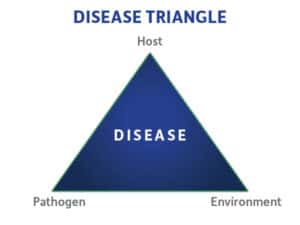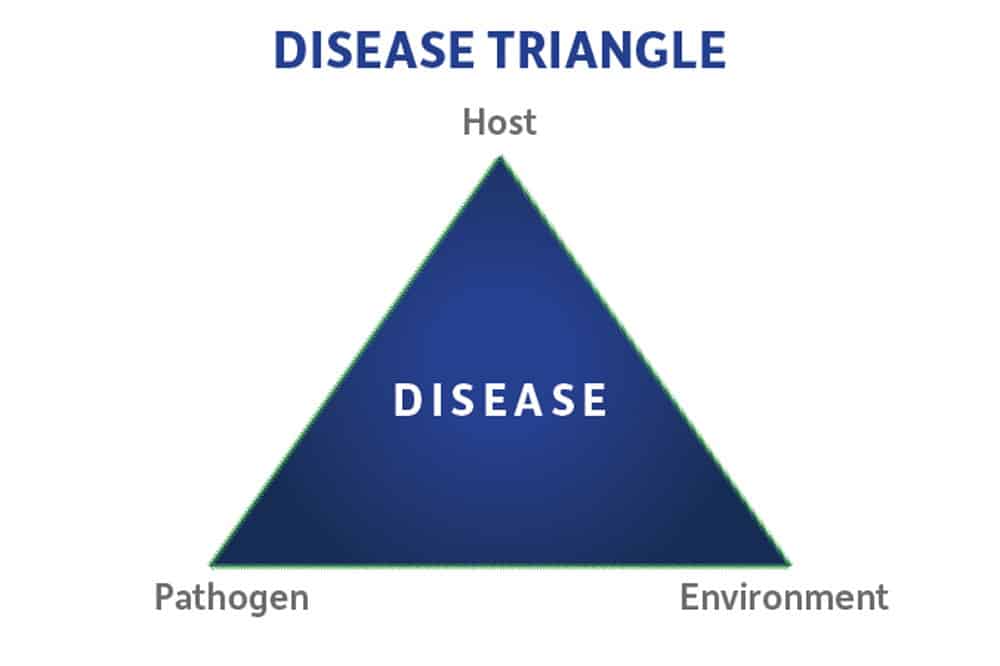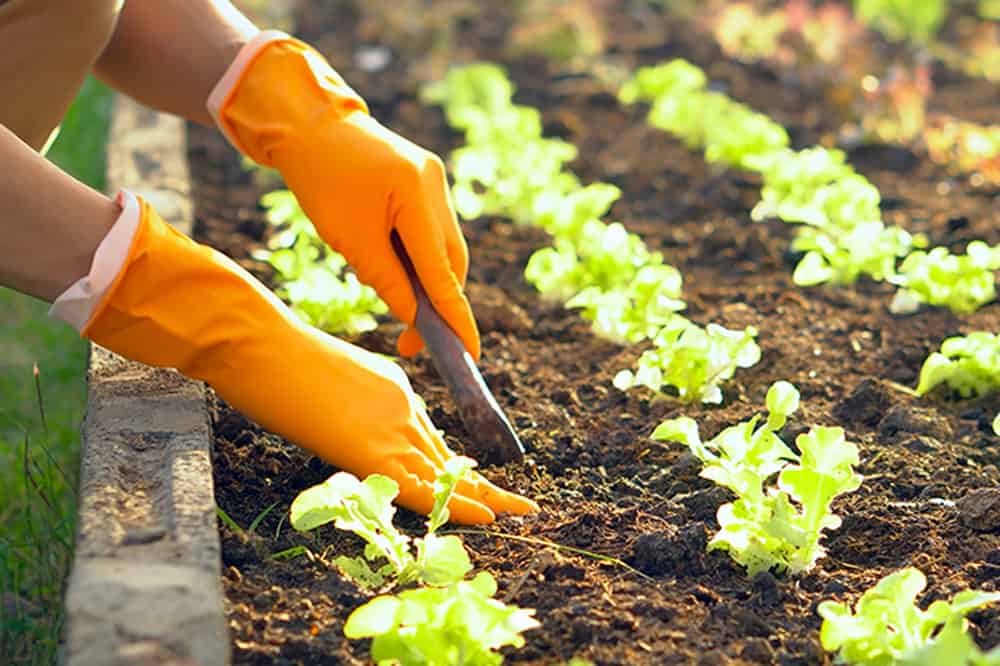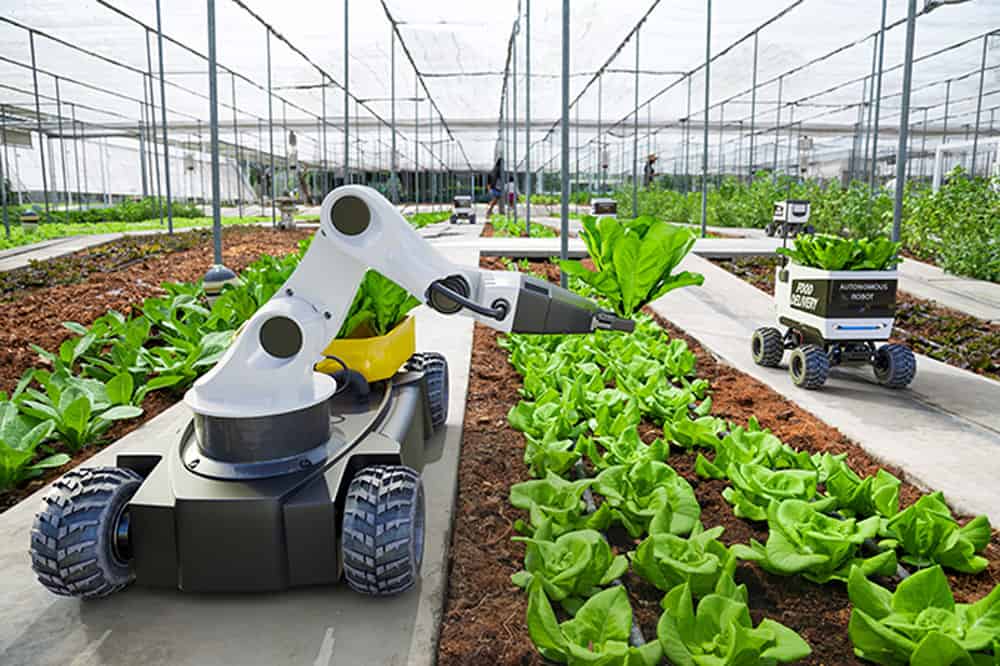The disease triangle has helped predict when outbreaks might occur, but growers still must do their part to maintain healthy crops.
It’s a simple triangle, but one that has had considerable influence in the agricultural industry.
According to the American Phytopathological Society (APS), “the disease triangle” illustrates one of the paradigms in plant pathology – that the existence of a disease caused by a biotic agent requires the interaction of a susceptible host, a virulent pathogen, and an environment that favors disease development. The disease triangle has been around for decades and was most likely published by plant pathologist R.B. Stevens in 1960, according to APS.
As weather patterns shift, growers are seeing an increased presence in the necessary conditions of disease and environmental factors, leading to more yield loss events. This means growers must find ways to support plants and their health so they can best fight disease.
Predicting Disease
An example of the disease triangle’s host, pathogen, and environment all occurring in the same space and time occurred this past summer as soybean farmers in southwest Michigan reported spikes in diseases including white mold in some fields, according to the Michigan State University (MSU) Extension. It was a classic case of the host (soybeans), pathogen (white mold), and environment (wet/humid conditions) all colliding at the same time. Unfortunately, MSU Extension reported that it was too late for growers to do anything about the problem, citing that “revenge spraying” would only waste money.
Predicting weather patterns can help predict disease, by understanding when the environment may be conducive for pathogens to flourish. However, this is not an easy task and growers know better than most that weather patterns are becoming increasingly unpredictable.

In fact, the Mississippi State University Extension points out that one of the most difficult things in plant pathology is predicting when disease incidence will occur. No matter the crop, disease is lurking in most fields by the end of the growing season and plants are susceptible to it, the extension says, concluding that environmental conditions determine the limits or boundaries of as to whether those diseases will occur.
The Mississippi State University Extension also emphasizes the role of time in the equation. Even when all three hosts in the disease triangle are parallel, the disease doesn’t develop immediately. It takes time for it to infect the plant.
Influencing the Triangle
The disease triangle will no doubt continue to remain relevant in agriculture and will remain a useful tool for growers to consider. Many factors influence the triangle’s host, pathogen, and environment connection, according to a report in Nature, which stated that “available scientific evidence and simulation models suggest that plant disease pressures will significantly increase as climate change intensifies. … As the magnitude and mechanisms of these impacts remain largely uncertain, effective monitoring and management of plant pathogens should be one of the highest priorities to minimize disease, ensure food safety and environmental sustainability, and promote better socio-economic outcomes.”
Sustaining healthy crops through cultural management, proper irrigation, and nutrient management will also help plants be more resilient to disease and other stress events. Many tools are available to support a crops’ health, which allows it to more effectively use nutrients and resources available to it and have a higher disease tolerance. And many of these tools can complement traditional crop protection products used for disease control, offering proactive protection and increased effectiveness for the integrated approach of a grower’s disease management strategy.
Looking for crop solutions that can help growers maximize crop nutrients and water intake? Stoller’s plant performance products help support optimum growth when weather or stress conditions can cause imbalances. Learn more about how Stoller can help growers boost crop yield and quality by contacting a local subsidiary.





 Argentina
Argentina Australia
Australia Belize
Belize Brazil
Brazil Chile
Chile China
China Canada
Canada Colombia
Colombia Costa Rica
Costa Rica Dominican Republic
Dominican Republic El Salvador
El Salvador Europe
Europe Guatemala
Guatemala Honduras
Honduras India
India Mexico
Mexico Nicaragua
Nicaragua Panama
Panama Peru
Peru Philippines
Philippines South Africa
South Africa Truthahn
Truthahn